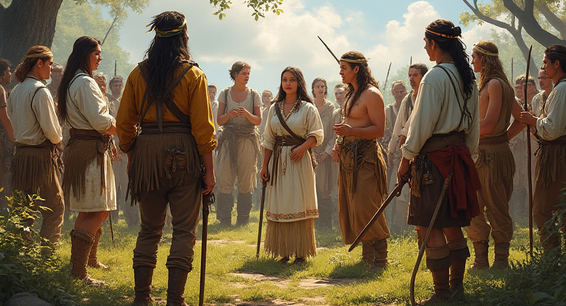PENNSYLVANIA STATE – That name didn’t always mean the land we now call Pennsylvania. Its history is rich with the stories of Native American tribes, European explorers, and the birth of a new colony that would eventually become a cornerstone of the United States.
Pennsylvania: From Lenapehoking to Penn’s Woods
Before Europe arrived, the land was home to various Native American tribes. The most prominent were the Lenape, also known as the Delaware Indians. Their territory, encompassing parts of present-day New Jersey, Pennsylvania, Delaware, and New York, was called “Lenapehoking,” meaning “the land of the Lenape.” The Lenape had a complex society and a deep connection to the land, living in harmony with the natural world for centuries.
European Exploration and Nicknames
When Europeans began to explore the region, they encountered the Lenape and other tribes. Early Dutch and Swedish settlers referred to the area using various names, often based on prominent geographical features or the Native American inhabitants. Some of these names included:
New Sweden: In the 17th century, the Swedish established a colony in the Delaware Valley, encompassing parts of present-day Pennsylvania, Delaware, and New Jersey. They named their territory “New Sweden.”
The Three Lower Counties: This referred to the area that is now Delaware, which was initially part of Pennsylvania but later gained separate status.
The Birth of Pennsylvania
In 1681, King Charles II granted William Penn a vast tract of land to settle a debt owed to his father. Penn, a Quaker seeking religious freedom for his people, envisioned a colony built on principles of tolerance and equality. He initially suggested “Sylvania,” meaning “woods” in Latin. However, the King insisted on naming it “Pennsylvania” in honor of Penn’s father, Admiral Sir William Penn.
“Pennsylvania” thus translates to “Penn’s Woods,” a name that reflects both the vast forests that covered the land and the legacy of its founder.
Legacy of the Name
The name “Pennsylvania” has endured for centuries, symbolizing the state’s rich history and its role in the founding of the United States. While the Native American name “Lenapehoking” is no longer in official use, it reminds us of the land’s original inhabitants and their deep connection to it. The various European nicknames, although faded from common usage, offer glimpses into the region’s early colonial history.
Pennsylvania’s story is transformed from a land inhabited by Native American tribes to a thriving colony and eventually a state. Its name, “Pennsylvania,” carries echoes of its past, a testament to the people and events that shaped its identity.


Follow Us!